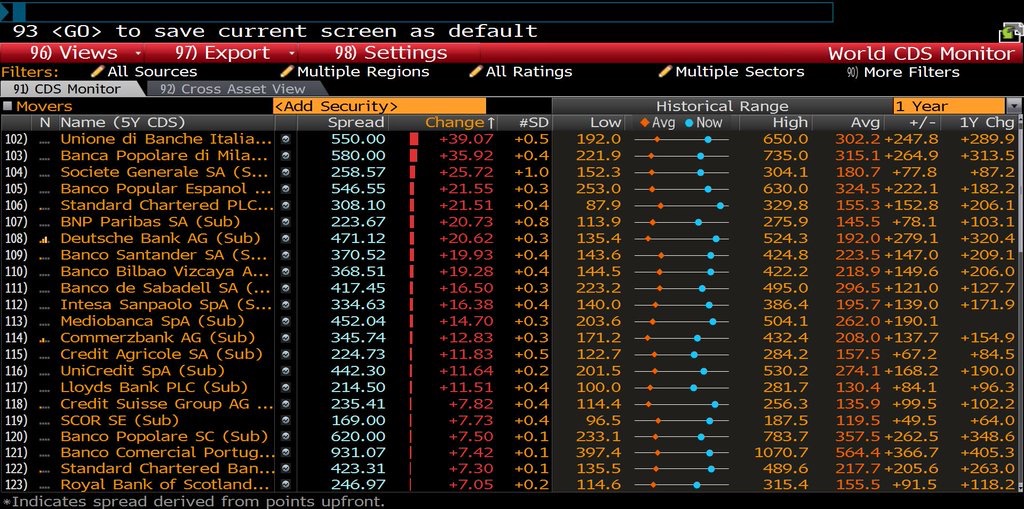Last July and again in December, as credit risk was surging globally, we strongly recommended our subscribers take down risk to equities.
“US equity markets continue their slow climb higher, pushing the S&P 500 back near the highs, while the junk bond market is selling off”. – Bear Traps July 24, 2015

The chart above is a look at European and Asian 5 year CDS’ credit risk on banks this morning. Notice the correlation among these credits are still high.
It’s still too early to tell the side effects of Negative Rates in Japan but there is no doubt, many participants are losing faith in central banks, putting a bid under gold as the “fear trade” and leading to more misallocations of capital.
As long as commodities stay at depressed levels, volatility and Credit Default Swaps on Banks will remain expensive.
In simple terms, a Credit Default Swap (CDS) is a hedge against an asset falling in price. When an investor assumes a company or security (i.e. bonds) may default, investors will buy insurance protection in the form of a Credit Default Swap to protect against loss. When the price of a CDS rises it is a sign that a default has a higher probability.
Over the last few days, 5 year Credit Default Swaps on US banks have come in substantially (less expensive meaning less risky), leading to a rally in equities globally.
However, Asian credit, especially Japanese banks are still at elevated levels. Meaning the recent surge in stocks isn’t confirming what credit is suggesting. Therefore, all rallies will remain suspect and should be sold until the price of CDS on banks (insurance protection) falls.
Continue reading What’s Japan telling us about US Equities?


